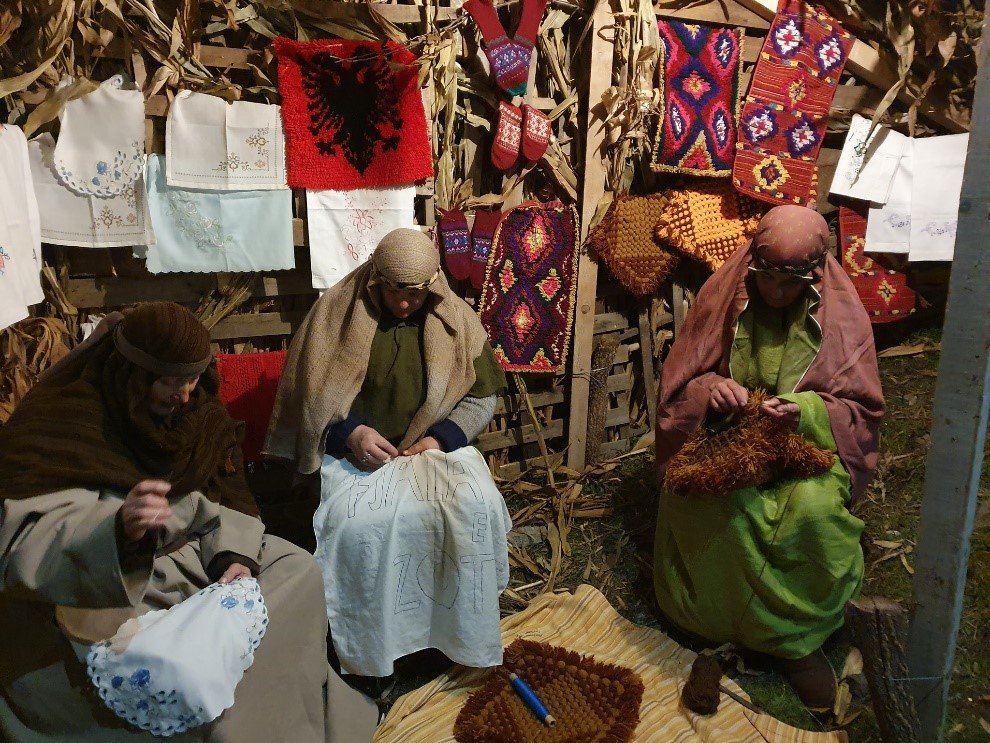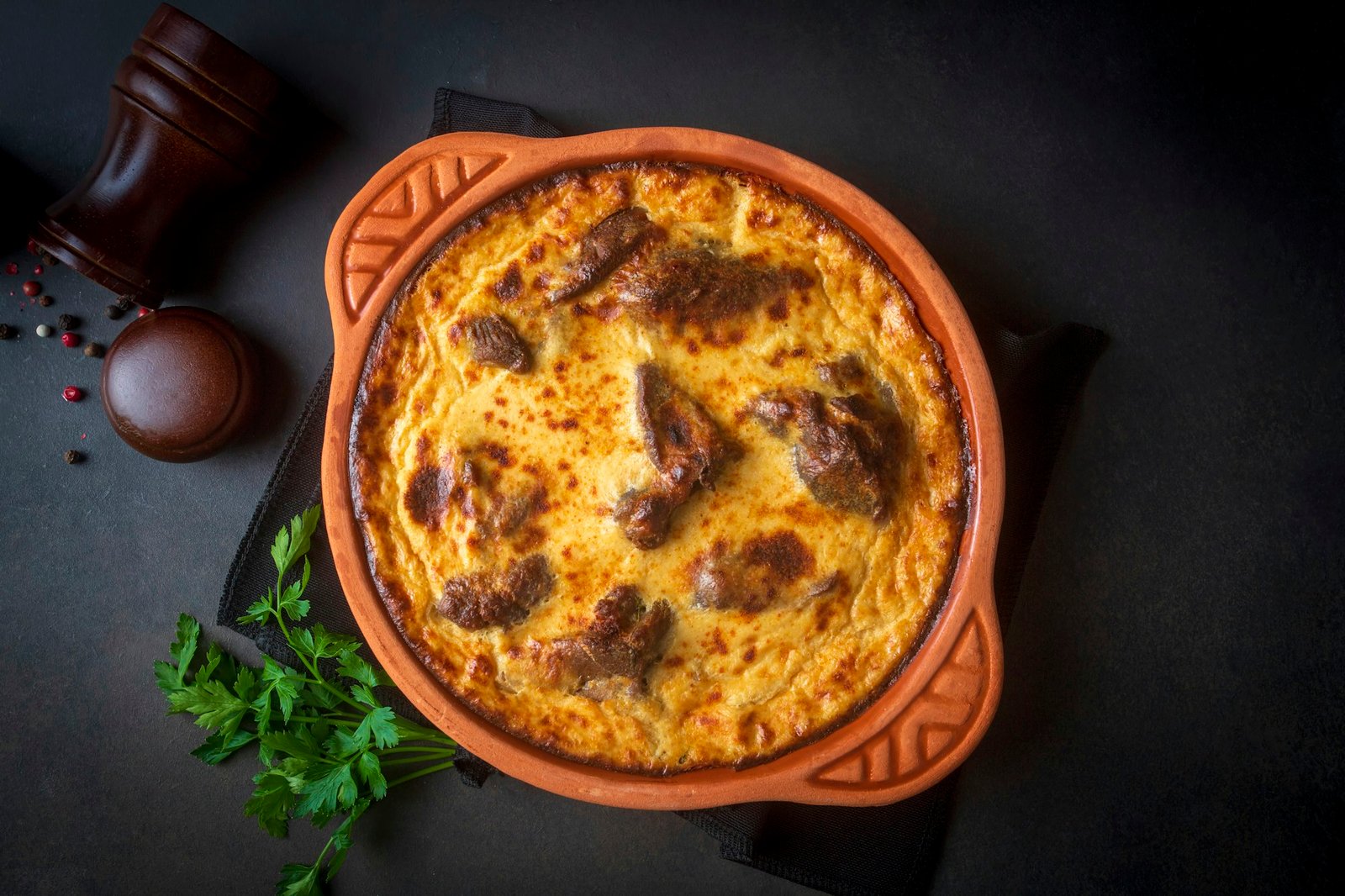The ancient history, cultural monuments, the region’s wealth, and ancient traditions are inevitably accompanied by rich artisan crafts. They are well-known nationally and beyond for the beauty and richness of the Zadrima costume, which stands out for its beauty and the quality of its decorations. Similarly, the costumes of the Shllaku region are renowned for their distinctive character. In this area, crafts such as weapon making, woodworking, and carving have been historically practiced, but above all, the art of weaving stands out. These traditional crafts have been meticulously preserved and continue to be practiced today using the same techniques and technology.
The Zadrima bridal costume is particularly special and valuable in terms of the quality of its embellishments, which are rarely found in other regions of Albania. It expresses the grandeur and solemnity of one of the most important days of our lives. The quality of the attire and accessories directly reflected the social and economic status of the bride’s family, so extraordinary efforts were made to ensure that the bride wore a rich and expensive costume.
According to researcher Gjokhilaj, the accessories of the bridal attire consist of the neck chain, headband, forehead ornament, cross, and earrings. The forehead ornament, known as “fodulle,” was made of two metal plates covered with a piece of red velvet or a so-called “kamosh,” and embroidered with gold, silver, and coral. In many cases, they were crafted with filigree and decorated with shining red stones, usually, but also with other colors like green or blue, and not covered with velvet pieces adorned with golden tassels.
Part of this embellishment ensemble of the bride undoubtedly includes the garments, which are just as carefully selected as the adornments. According to a study by Tom Gjokhilaj, an important component of the bride’s attire was the headscarf, which was undoubtedly made of high-quality material and intricately crafted. Another part of the bridal attire was the “anteria,” a type of jacket that was also handcrafted by the girls themselves or their mothers. The “anteria” had long sleeves and the lower parts were often decorated with tassels, predominantly red and other colors, especially on the cuffs and other edges. Additionally, as part of the bride’s adornment and attire, there were also the long red sashes (overlapping style), which in the Zadrima region, unlike those in Bushati and other areas, were long and reached below the knee. The dominant color of the bride’s sashes was bright red.
Currently, there are many families and women who conceptualize, design, and produce traditional costumes of the region. A significant number of them have turned this tradition into an enterprise by engaging other women and girls from the village, making these crafts marketable in Albania and beyond. Many families meticulously preserve their old costumes, which are only worn on ceremonial occasions and important days such as weddings, family celebrations, religious festivals, etc.
The crafts are primarily made from wool, but also from cotton and silk. Artisanship in the Vaun e Dejës region experienced a crisis during the transition period in Albania, but it is slowly regaining its momentum thanks to local government initiatives, various projects, and primarily, the entrepreneurial initiative of women and girls in the area. There are about 25-30 families in Vaun e Dejës, Mjedë, Bushat, Shelqet, Hajmel, Nenshatë, etc., who derive income from weaving on looms and producing shawls, table covers, bed sheets, small coverings, and traditional costumes of the region, among other things. Various embroidery motifs with Albanian designs, crochet work, and men’s attire with fez hats and vests are also products of artisans in Vaun e Dejës. Handcrafted items made by women have stood the test of time, even to this day. Table covers or tablecloths are of high quality and highly favored. The production of silk thread has also been ancient and widespread, but currently, it is being used less frequently.



